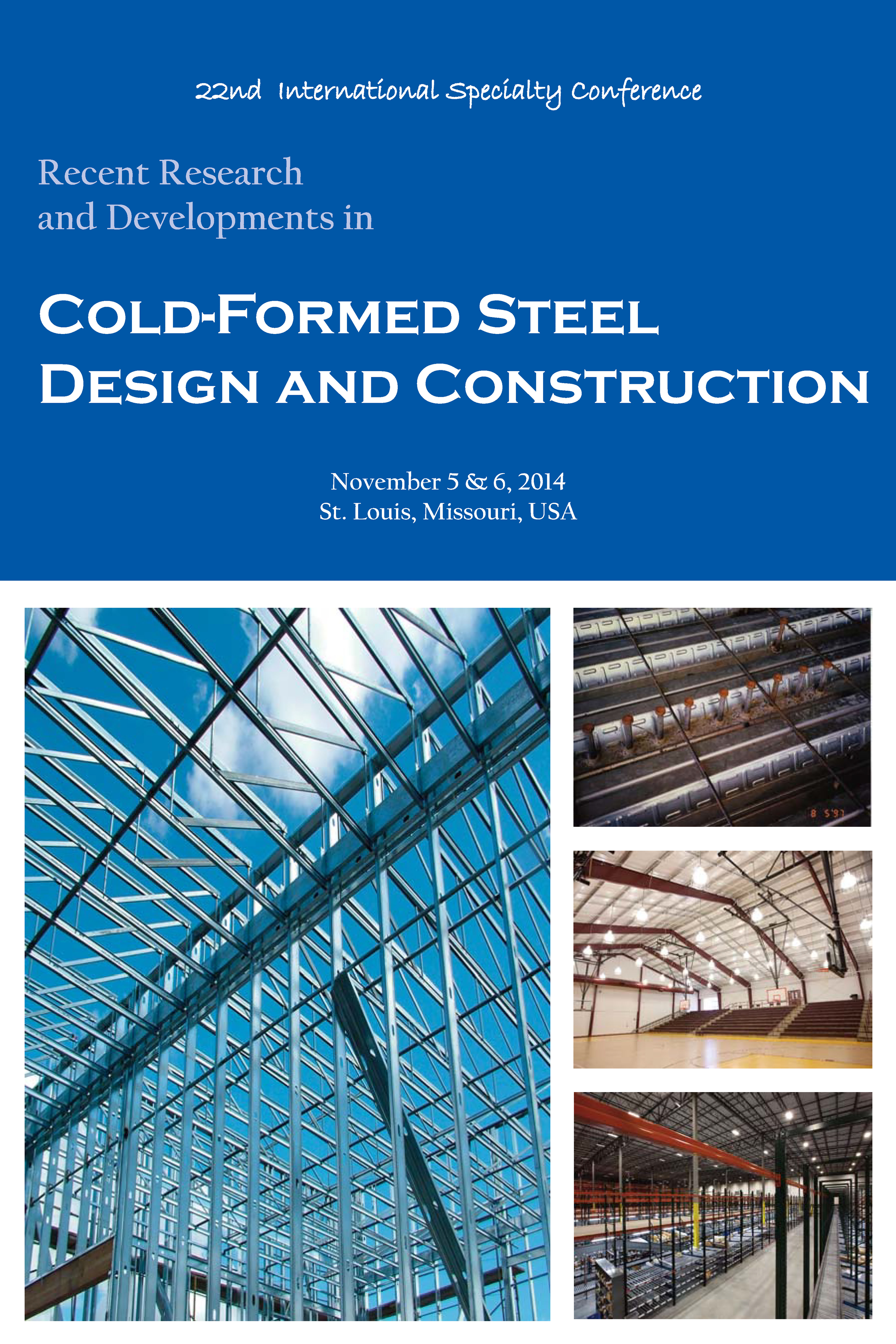Session Dates
05 Nov 2014
Keywords and Phrases
Rivet-Fastened Rectangular Hollow Flange Channel Beams; Cold-formed Steel Beams; Section Moment Capacity; Direct Strength Method; Finite Element Analyses
Abstract
The rivet-fastened rectangular hollow flange channel beam (RHFCB) is a new cold-formed hollow section proposed as an alternative to welded hollow flange beams. It is a monosymmetric channel section made by rivet-fastening two torsionally rigid rectangular hollow flanges to a web plate. This method will allow the designers to develop optimum sections, with affordable rivet connection between their web and flange elements. In addition to this unique geometry, the rivet-fastened RHFCBs also have unique characteristics relating to their stress-strain characteristics, residual stresses, initial geometric imperfections and hollow flanges that are not encountered in conventional hot-rolled and cold-formed steel channel sections. Therefore detailed experimental and numerical studies were conducted to study the section moment capacities of rivet-fastened RHFCBs. This paper presents the details of the numerical study of rivet-fastened RHFCBs and the results. Finite element models of rivet-fastened RHFCBs were developed by including all the significant effects that influence their ultimate section moment capacities, including material inelasticity, and geometric imperfections. The results from finite element analyses were then compared with corresponding experimental results and the predictions from the current design rules. Test results showed that the developed finite element models were able to predict the behaviour and section moment capacities of RHFCBs. The validated model was then used in a detailed parametric study that produced additional section moment capacity data of the rivet-fastened RHFCBs.
Department(s)
Civil, Architectural and Environmental Engineering
Research Center/Lab(s)
Wei-Wen Yu Center for Cold-Formed Steel Structures
Meeting Name
22nd International Specialty Conference on Cold-Formed Steel Structures
Publisher
Missouri University of Science and Technology
Document Version
Final Version
Rights
© 2014 Missouri University of Science and Technology, All rights reserved.
Document Type
Article - Conference proceedings
File Type
text
Language
English
Recommended Citation
Siahaan, R.; Keerthan, P.; and Mahendran, M., "Numerical Studies of Rivet-Fastened Rectangular Hollow Flange Channel Beams" (2014). CCFSS Proceedings of International Specialty Conference on Cold-Formed Steel Structures (1971 - 2018). 3.
https://scholarsmine.mst.edu/isccss/22iccfss/session03/3
Numerical Studies of Rivet-Fastened Rectangular Hollow Flange Channel Beams
The rivet-fastened rectangular hollow flange channel beam (RHFCB) is a new cold-formed hollow section proposed as an alternative to welded hollow flange beams. It is a monosymmetric channel section made by rivet-fastening two torsionally rigid rectangular hollow flanges to a web plate. This method will allow the designers to develop optimum sections, with affordable rivet connection between their web and flange elements. In addition to this unique geometry, the rivet-fastened RHFCBs also have unique characteristics relating to their stress-strain characteristics, residual stresses, initial geometric imperfections and hollow flanges that are not encountered in conventional hot-rolled and cold-formed steel channel sections. Therefore detailed experimental and numerical studies were conducted to study the section moment capacities of rivet-fastened RHFCBs. This paper presents the details of the numerical study of rivet-fastened RHFCBs and the results. Finite element models of rivet-fastened RHFCBs were developed by including all the significant effects that influence their ultimate section moment capacities, including material inelasticity, and geometric imperfections. The results from finite element analyses were then compared with corresponding experimental results and the predictions from the current design rules. Test results showed that the developed finite element models were able to predict the behaviour and section moment capacities of RHFCBs. The validated model was then used in a detailed parametric study that produced additional section moment capacity data of the rivet-fastened RHFCBs.



